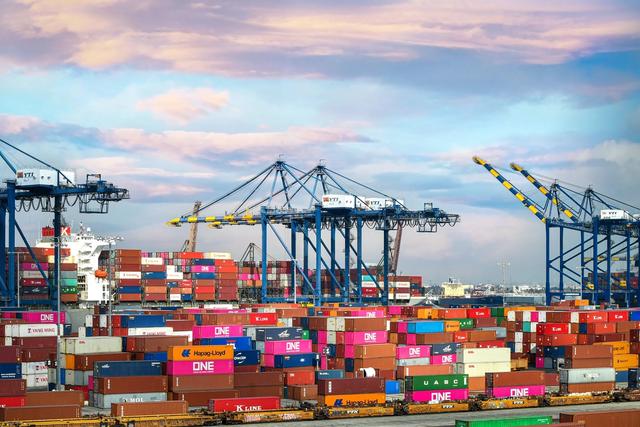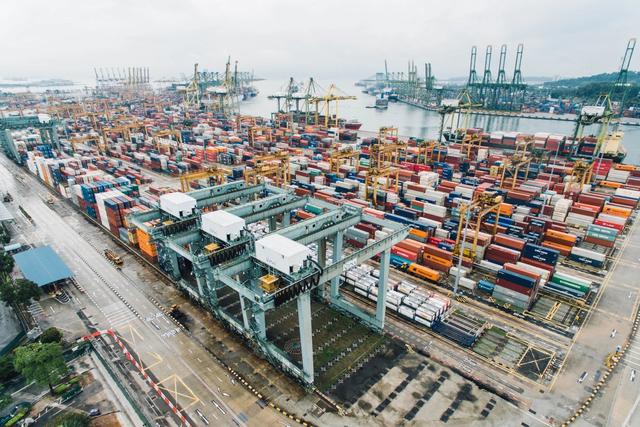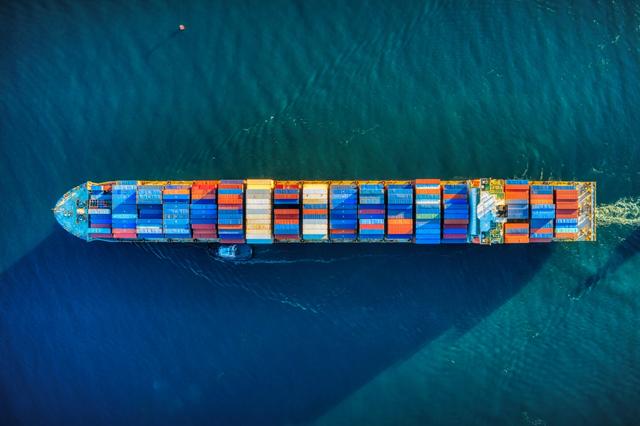The shipping industry during the pandemic: what is disrupting it and how to protect your business against currency swings?
Jordan Tilley
Chief Executive Officer
There’s an old saying: “a chain is only as strong as its weakest link”. When it comes to the global supply chains, one weak link can be easily identified and resolved. However, a seismic event has created weakness throughout these vital networks that the world takes for granted: the Covid-19 pandemic. And the result has been crippling: shortages of key manufacturing components, order backlogs, delivery delays, driver shortages, and a spike in transportation costs and consumer prices.
Huge dislocations are being experienced with air cargo, trucking lines, railways and even warehouses. Another major casualty has been the shipping industry, which is widely considered the backbone of world trade - it is estimated that 80 per cent of all goods are carried by sea.
From lifting millions of people out of poverty to creating a generation of discount-minded shoppers, the shipping industry has much to be proud about. However, the pandemic has highlighted how fragile its network of approximately 6,000 ships carrying roughly 25 million containers is when the going gets tough.
In normal times, shipping is able to remain in sync with port capacity, railroad lines and trucking networks - leading to the widespread adoption of more efficient just-in-time inventory management. Amid the worst public health crises in modern history, however, it has lacked the resilience to contend with seesawing demand for goods, on-again-off-again lockdowns, and labour shortages.
The shipping system has proved too rigid to absorb the tremors created by the pandemic.
Subsequent supply-chain disruptions have left factories idle, unleashed inflationary pressures, and caused panic that Christmas could be stuck in a shipping container this year.
Get leading currency rates for your business
Shipping container shortage

If the shipping industry is the backbone of world trade, then the ubiquitous containers that move goods from one international trade hub to another are the backbone of the shipping industry.
The disruption to the shipping industry left handlers of these 40-foot containers struggling to manage traffic, causing shortages of containers where and when they were needed most - and China’s recovery from the pandemic was the source of the problem. The world’s second-largest economy has recovered faster than other economic heavyweights, causing exports of lockdown-related goods, electronics and medical equipment from its shores to soar. By the end of 2020, China’s trade surplus hit a record high.
However, the spike in demand for its products coincided with pandemic-related restrictions and staffing shortages in ports across the US and Europe, creating bottlenecks and delaying the return of containers to China - which had been raced overseas as manufacturers tried to catch up with demand. A subsequent lack of lorry drivers and warehouse workers elsewhere in the world prevented ports from returning containers to east Asian ports. And the crisis was compounded by the freak grounding of a giant container ship in the Suez Canal in March, leaving around 330 vessels stranded on either side and sending tremors through global supply chains.
Soaring shipping costs
The cost of shipping goods from China to Europe has hit record highs as the shortage of empty containers disrupts global trade. When western demand for Chinese goods rebounded in the second half of 2020, the shipping container shortage generated competition among shippers for available containers, causing freight rates to soar. Container rates eventually hit a record high of $11,109 in September 2021, after falling below $1,500 at the start of the pandemic, according to data provider Freightos.
Congestion at ports has also contributed to higher costs, with shipping lines charging extra fees to offset longer waiting times.
Congestion at ports

As the pandemic subsides and the world eases back to life, another challenge has surfaced for the shipping industry: congestion at ports. In contrast to the start of the pandemic, when companies were forced to cut services, major global pandemic production shifts have triggered an unprecedented cargo surge at ports - aggravating the container shortage.
While the coronavirus has largely been contained, some destinations continue to grapple with Covid-related challenges like workers off sick and border restrictions. This has exacerbated gridlock in some ports, which lack the resources to unload and reload more than 10,000 containers from huge ships - a lengthy process at the best of times.
Take the US for example, where satellite imagery over the key ports of Long Beach and Los Angeles reveals a swarm of container ships, waiting to offload their cargo. These ships are responsible for transporting a wide range of goods from Asia across the Pacific Ocean to the western coast of the US.
Container ship shortages
Soaring demand for goods is placing increasing pressure on the shipping industry’s infrastructure - not least the vessels themselves. The availability of container ships is currently strained given the surge in demand for their services.
The strain on vessel supply poses a significant threat to global supply chains - and the problem is not going to improve until demand for goods settles at pre-pandemic levels. The majority of companies have hesitated until now to order new capacity - which will take three, four or five years to deliver - while many old ships are overdue for scrapping. And what about the shipyards charged with building this new fleet of container ships? Globally they have dropped in number by two-thirds since 2007 to about 115 - raising concerns about the shipping industry’s ability to expand its fleet at the required pace.
Talk to a currency specialist
Why couldn’t the shipping industry pivot?
Concentration within an industry can be defined as: “the degree to which a small number of firms make up for the total production in the market.” If the concentration is low, it means the top firms are not influencing market production and the industry is considered to be competitive. Within the shipping industry, this was not the case pre-pandemic, depriving it of the competitive spirit that could have allowed it to adapt to fluctuating demand.
In 2017, around 12 container lines that control 80% of the global shipping market formed three main alliances: 2M, THE and Ocean. The aim of their machinations was simple: to share ships, cooperate on routes, limit excess capacity, and secure shipping costs with long-term contracts. But then the pandemic struck with devastating force.
Therefore, manufacturers reeling from shortages of key components and higher raw material costs were forced to engage in bidding wars to win space on vessels, prompting exporters to hike prices or cancel shipments altogether.
The knock-on effect

The economic shockwaves created by the shipping industry’s pandemic-fuelled bottlenecks can be felt beyond the high seas, with entire supply chains feeling the aftershocks. For example:
- Congestion at international ports soon spread to railroads and inland rail terminals, exacerbating the lorry shortage. Importers experienced delays in receiving key manufacturing components and exporters faced challenges accessing the shipping system. The chain had broken.
- Months of shipping delays have caused prices and lead times of goods from abroad to soar, preventing some businesses from taking advantage of economic recoveries that have followed lockdowns. A survey of purchasing managers in the US showed that shipping restrictions had contributed to an increase in the average lead time for production materials in September 2021 to 92 days - the highest in figures dating back to 1987.
- Retailers have had to find cost savings in order to avoid raising prices because of higher shipping costs.
- Shipping delays have contributed to a global shortage of semiconductors, following a surge in demand for consumer electronics during the pandemic. This has obstructed production in the auto industry in particular, as chipmakers diverted supplies for customers in consumer electronics, which pay more for semiconductors.
What does the future hold for the shipping industry?
Shipping operators are emerging from the rough seas created by Covid-19 pandemic headwinds - thanks largely to robust stimulus-driven demand in developed countries and resurgent manufacturing in China. And while the industry has not been left unscathed, the subsequent surge in shipping rates has provided some operators with a platform to do more than just stabilise. For example, shares of A.P. Moeller-Maersk - the world’s largest carrier - and China’s Cosco Shipping have skyrocketed.
Looking further ahead, it is widely expected that shipping companies will emerge from the pandemic more resilient than in previous downturns. While the process of concentration within the industry was its achilles heel at the height of the Covid-crisis, it could play a key role in its future success. Consumer demand and shipping rates won’t remain elevated forever, but shipping companies will benefit from structural tailwinds moving forward - thanks largely to previous measures to restrain overcapacity and consolidate the market through concentration.
Making international payments amid the pandemic

The shipping industry is emerging into calmer waters as the world recovers from the worst public-health crises in modern history. But the course to recovery will be a long one following the pernicious side effects of the pandemic, which are still being felt: container shortages, congestion at international ports, soaring shipping costs, container ship shortages - and their damaging ripple effect on the wider global supply chain.
This sudden and unexpected shift in the shipping seascape has precipitated new ways of working, leaner business models, fresh challenges and even new opportunities. As businesses that operate internationally adjust to the new normal and plan for the future, they must be acutely aware of the need to manage their exposure to currency risk.
Currencies are traded around the clock - 24 hours a day. Therefore, the value of the pound against other currencies is constantly changing - not just daily but by the minute. Even slight fluctuations can make a big difference to the price of your business’s international payments. Even before the pandemic struck this exposure to currency market risk had the potential to dent your bottom line if left unaccounted for. Since then, the importance of mitigating the impact of exchange rate fluctuations on the cost of your international payments has been magnified.
For example, back in March 2020, when the true extent of the Covid-19 pandemic became clear, the pound sunk to its lowest level against the dollar since 1985 and its lowest level against the euro since the depth of the financial crisis 11 years earlier.
This has brought the need to seek the services of a currency specialist into sharp focus for many businesses in the shipping industry.
Clear Treasury
Clear Treasury are experts providing clients with the knowledge and tools they need to grow a successful international business. Against the backdrop of a global pandemic, this guidance and expertise are more crucial than ever. Our relationship-focused approach achieves long term success and is underpinned by our dedication to excellent customer service.
We understand how technology is at the core of how businesses operate in the modern digitally-enabled world. This has enabled us to develop a technology platform that seamlessly integrates our products and services into your ecosystem - removing the complexity and risk involved in making international payments.
Our knowledge and experience allow us to provide our clients with solutions and guidance that help their business thrive when engaged in international trade - both through our team of experts and our innovative technology.
You will be assigned a dedicated account manager who can help you to plan and establish a proactive hedging strategy. There’s no “one size fits all” approach to protecting your bottom line from the threat of currency risk. Therefore, a bespoke hedging strategy that aligns with your requirements, commercial context, and risk appetite will allow your business to execute effective solutions that sync with its aims.
Get secure bank-beating rates
Related Articles
Daily Analysis: GBP/USD Hits 14-Month Lows Amid Severe Economic Uncertainty
Our daily analysis of EUR, GBP and USD.
Read more
Weekly Round-Up & The Week Ahead
Our weekly round-up and a look at the week ahead for EUR, GBP and USD.
Read more
The Rise of B2B Cross-Border Payments
Businesses that wish to protect their overseas markets or expand their international trade, must innovate their payments processes internally, or in concert with a technologically advanced fintech provider. Read on to discover more about the rise of cross-border B2B payments and what your business needs to do to stay ahead.
Read more



